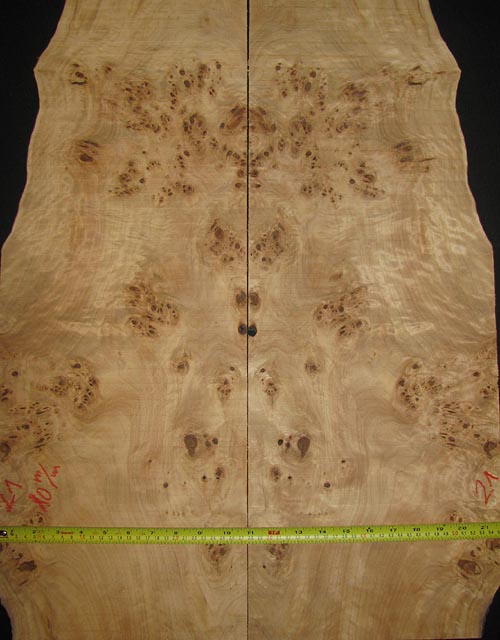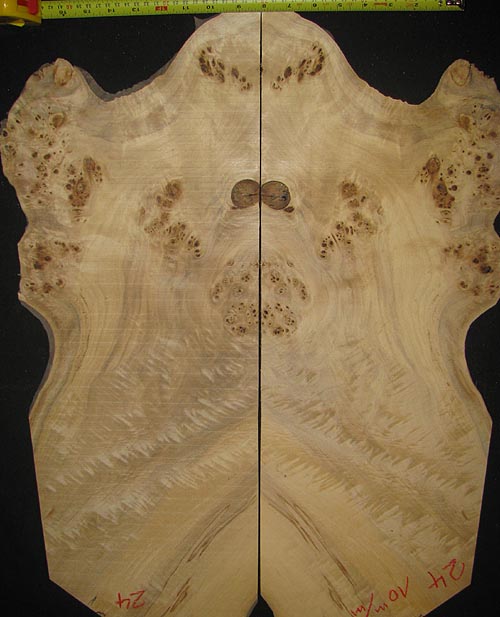 Poplar Burl, examples |
 |
 |
more tonewood : E-Guitar Tops E-Guitar Bodies Veneers |
Names and distribution: Of the European poplars, Aspe (Populus tremula), white poplar (P. alba), and black poplar (P. nigra) originate from plantations. These so-called economic poplars are grown crop varieties with high vigor. They are spread across Europe.
Appearance: Sapwood and heartwood color not distinguished; wood greyish-white to yellowish-white, sometimes even slightly reddish brown. Finely pored, homogeneous texture, barely drawn, simple - unless intergrowths are caused genetically or locally (Poplar Burl).
Properties: Density at u = 12% is 0.45 t / m3. The shrinkage from fresh state to u = 12% is specified tangentially as 7.5% and radially as 3.8%. The drying is carried out smoothly. Poplar wood is easy and clean to process, uniformly smooth surfaces are possible, the wood is excellent for polishing and pickling. The Brinell hardness is indicated as 10, the modulus of elasticity as about 8200 N/mm2. Poplar wood is not weather resistant and sensitive to fungi.
Use: Special wood for matches, wooden shoes, sauna battens, packaging means for fruit and vegetable, pallets, plywood. Poplar burl is used sporadically for turnery and musical instruments.
| References: |
GOTTWALD 1970: Holzbestimmung der wichtigsten Handelshölzer ARGE Holz 1998: Einheimische Nutzhölzer und ihre Verwendung |
Note: according to the latest findings, but without any warranty





